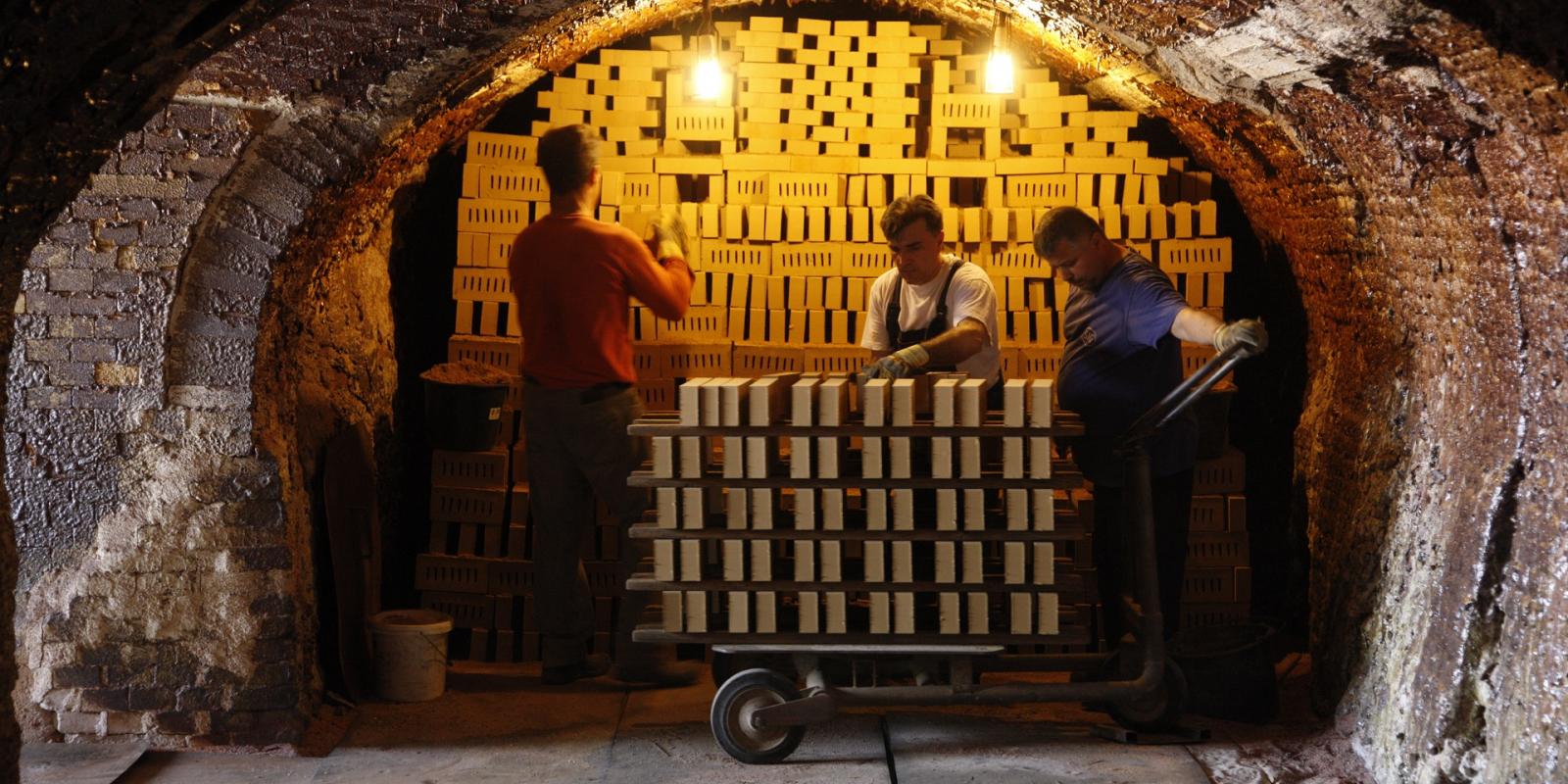
Production in the circular kiln
The invention of the continuously operated circular Hoffmann kiln revolutionised in the 19th century clay brick and tile industry. The continuous firing allowed a uniform and constant brick quality.
A circular kiln is a large circular brickwork structure with 14 to 20 firing chambers. The fire in each can be fed independently. A clever system of air ventilation inside the chambers makes the kiln highly energy-efficient and one of the most economic firing aggregates. As an example, the fired clay bricks heat the air with which the fire is supplied. This, in turn, allows the bricks to cool down faster. In the meantime the hot exhaust air dries and pre-heats the green bricks.
From clay to clinker: A process that takes about 12 to 15 days.
- Day 1:
Raw clay is extracted and green bricks are pressed. - Day 2-5:
The green bricks are dried by the kiln's exhaust air. - Day 5:
The kiln is loaded with green bricks and the chambers are closed. If hand-formed or water-struck, the green bricks are formed individually in moulds. - Day 5-9:
The firing process begins. Temperatures of up to 1200°C are reached. - Day 10-14:
The cooling-down process begins; the chambers are opened to allow air intake. - Day 14-15:
The baked bricks are taken out of the kiln. - Day 15:
The bricks are stored on pallets and delivered to the customer.
The result are clinkers manufactured in accordance with EN 771-1 for clay masonry units and which are granted Güteschutz Ziegel (certificate of German quality auditing commission) for their tried and tested quality. Due to the constant improvement of clay blending and firing processes, our circular kiln clinkers remain an innovative product.
Would you like to see circular kiln clinkers being manufactured on site? Contact us; we would be pleased to arrange for a visit.